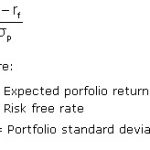- Dic 14, 2021
- Prova Prova
- 0

Manufacturing accounting follows the same fundamental principles as accounting in other industries, but there top ten internal controls to prevent and detect fraud! are many more moving parts than usual. Let’s look at some general best practices you should follow to optimize your accounting system. A comprehensive ebook with everything you need to know about accounting for manufacturers. Software for established businesses looking for greater efficiency, flexibility, and insight.
Manufacturing accounting software
- The chief disadvantage lies in having to routinely update the standards which can be arduous in case of constantly changing market conditions.
- Like the cost of goods sold, it generally refers to direct materials, direct labor, and manufacturing overhead.
- This inventory fraud was a relatively small part of the fraud allegedly committed by Rite Aid executives.
- It is a practice first initiated by Toyota but has influenced manufacturing for decades, particularly the automobile industry.
In addition to per-part inventory costing, it is also important to track the total number of on-hand inventory units. The two common types that inventory can be arranged in light of this are the perpetual and the periodic inventory system. These articles and related content is the property of The Sage Group plc or its contractors or its licensors (“Sage”).
Costing Methods for Manufacturing & Inventory
When you can estimate how much it’ll cost to produce each unit, you can gauge your progress during each accounting period. The first-in-first-out (FIFO) inventory valuation method assumes that the first unit you manufacture is the first one you sell. FIFO is generally the most popular approach, especially for manufacturers of products with limited shelf lives.
Data analytics
It is a tool that companies can use to help manage the finances and inventory of a manufacturing company. Variable costs are any production costs that change as you produce more or fewer items. For example, raw materials are typically variable because more materials closing entries are dated in the journal as of the date they are actually journalized are required to produce more items.

Deciphering jargon can be a frustrating challenge when you’re learning to navigate the complexities of manufacturing accounting. Here are brief explanations of some fundamental terms you’ll need to know to succeed. Fortunately, you don’t remote bookkeeping services necessarily have to hire an accountant full-time for your manufacturing business at first.
The last-in-first-out (LIFO) inventory valuation method is the opposite of the FIFO approach. As a result, your manufacturing company may get to choose between using cash or accrual accounting. While the cash method is often easier to implement, it’s not always the best way to organize your financial records. Because manufacturing businesses carry an inventory, the Internal Revenue Service (IRS) requires them to use the accrual basis of accounting. However, there’s an exception for small businesses with less than $26 million in average annual revenues. As a result, it’s worth investing in developing a deeper understanding of the related accounting and tax rules.
Here are some best-practice tips for conducting successful manufacturing accounting. Materials and production labour make up the bulk of a manufacturer’s direct costs. Manufacturing supplies, wages for non-production staff, and overheads like fuel or electricity can also all be considered direct costs. Nick Gallo is a Certified Public Accountant and content marketer for the financial industry. He has been an auditor of international companies and a tax strategist for real estate investors. He now writes articles on personal and corporate finance, accounting and tax matters, and entrepreneurship.
Whether you possess years of experience in the field or are just beginning to navigate its complexities, these insights will help you ensure your financial operations run smoothly. Job costing is advantageous for returning close-to-exact cost values per finished project or finished good. It is sometimes difficult to manage, however, as individual tracking and allocation of costs can be time-consuming.
